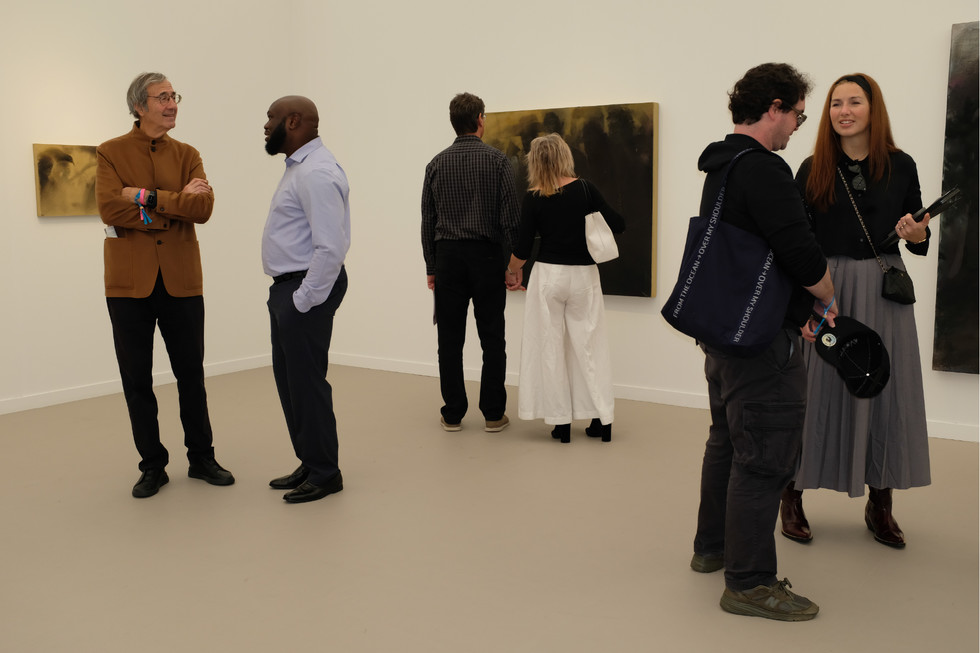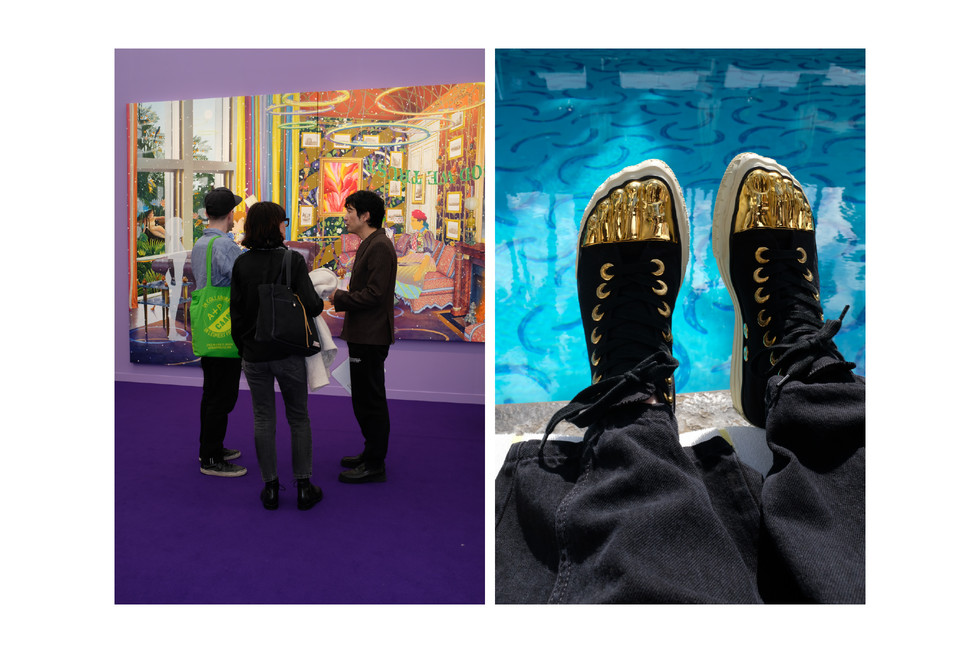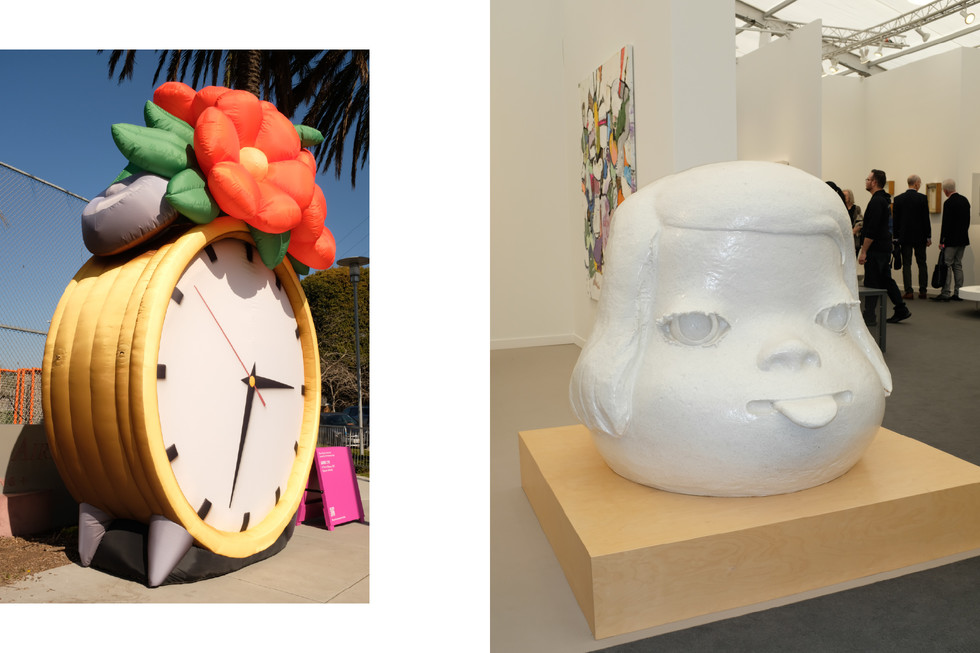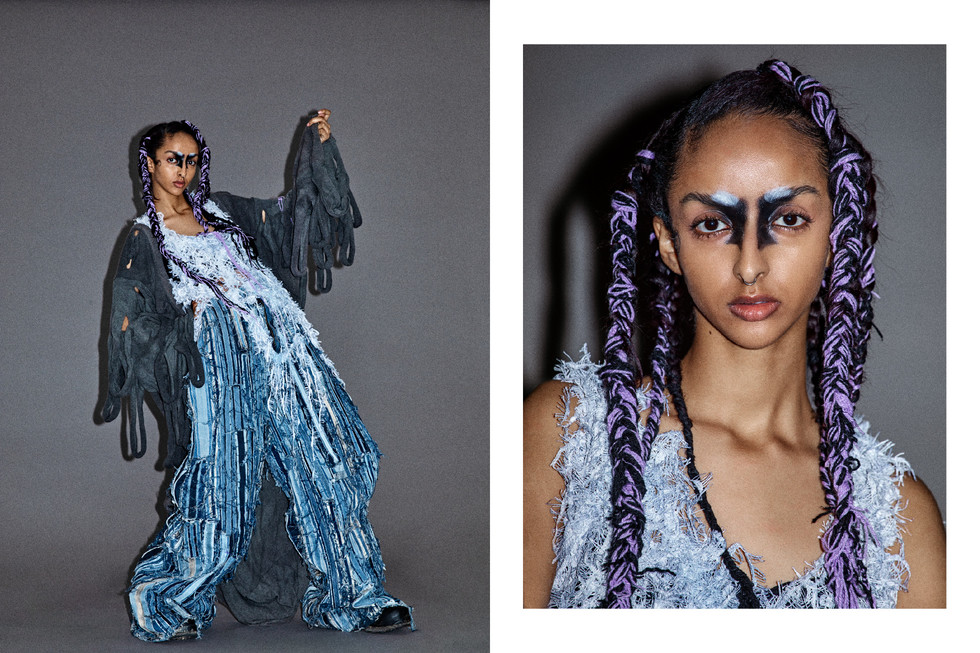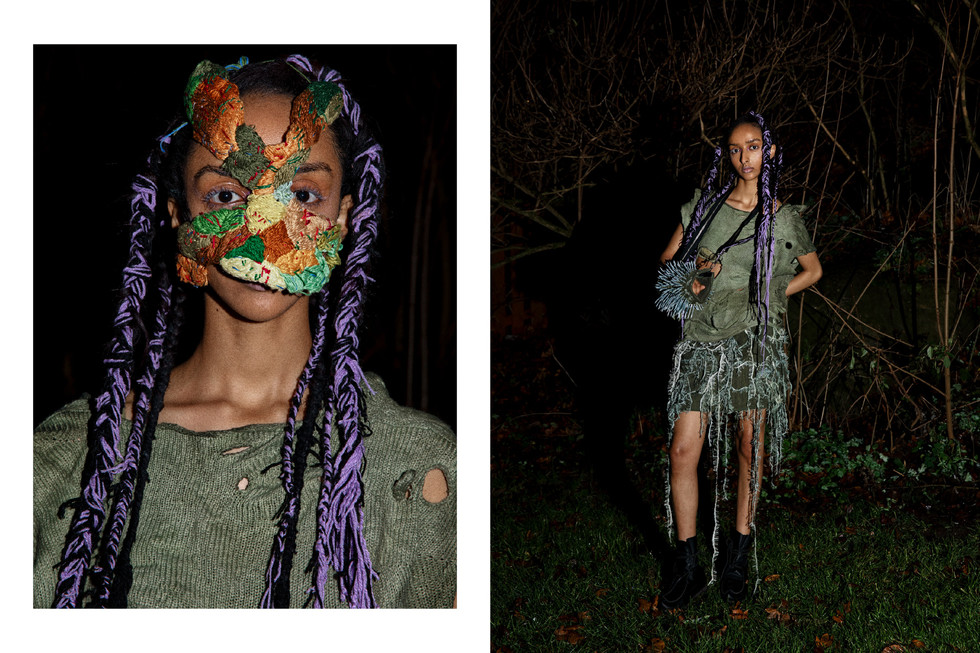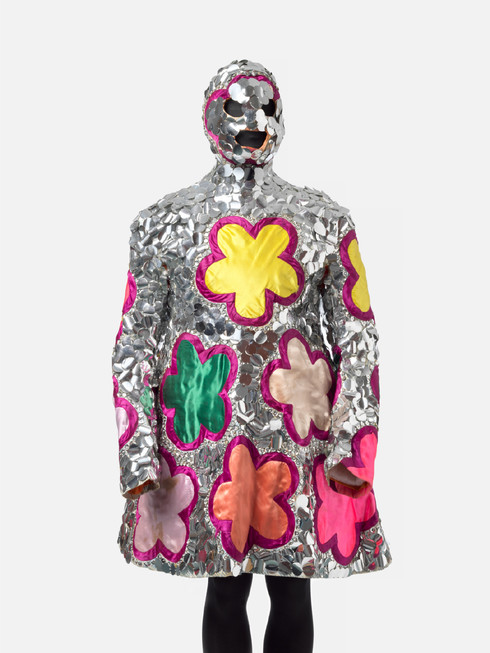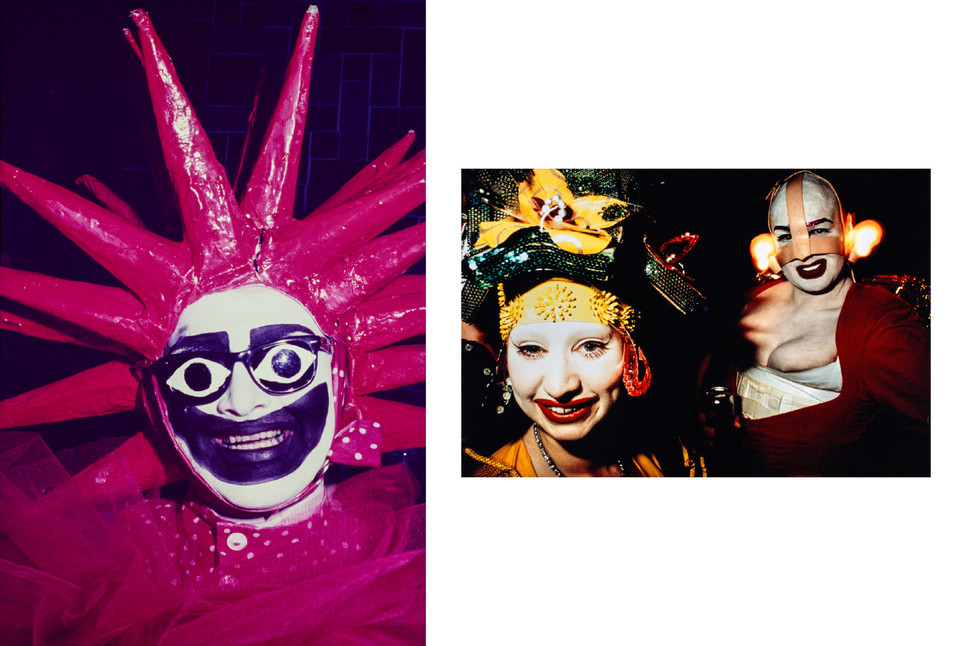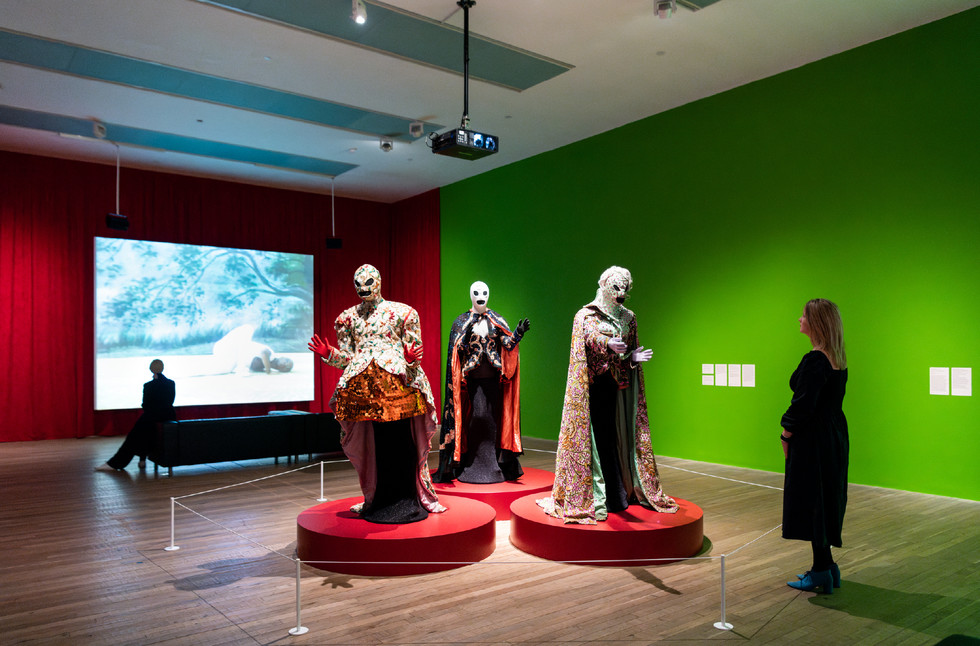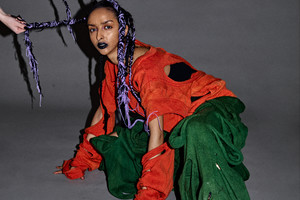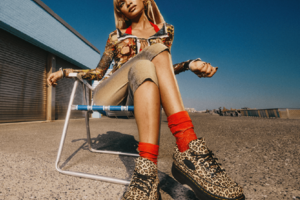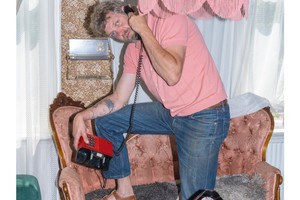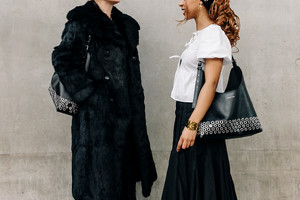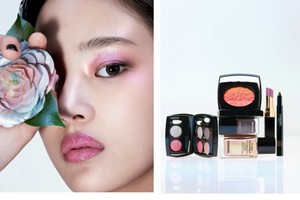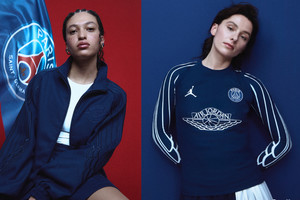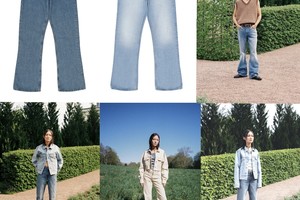Elin Olsson, a young designer from Beckmans College of Design, introduces her latest collection, Trasslig Återfödelse (Entangled Rebirth), where fragility meets resilience. Her designs, a blend of delicate threads and voluminous silhouettes, challenge conventional fashion norms by embracing imperfections as a source of strength. In this interview, we dive into her creative process, inspirations, and the artistry behind the collection we’ve styled and captured for this feature. Olsson’s work invites us to see fashion as both a craft and a reflection of life’s beautiful complexities.
Matilde Aarskog Wold: “When and how did your interest in fashion and design first emerge?”
Elin Olsson: I actually called my mother and asked. She said that as early as the age of two, I showed an interest in clothes and accessories by always being drawn to “bling bling” and trying on high heels that were way too big for me. My interest in sewing probably started around the age of 14 if I remember correctly. I bought second-hand clothes, cut them up, and then re-sewed them using my grandmother’s old Singer machine from the 1950s-60s. It wasn’t until high school that I truly realized fashion and design were what I wanted to pursue. I even asked my incredibly fashion-uninterested mother, “What is the profession called when you work in the fashion world?” After that, we traveled to Stockholm to attend open houses at various design schools, and that’s when I decided that one day, I would study at Beckmans. But it took me ten years before I actually started studying there. Like many others at the time, I wanted to explore the world first, and I also spent three years in preparatory studies before starting.
MAW: Your latest collection, “Trasslig Återfödelse,” has such an evocative title. Can you tell us about the inspiration behind the collection and walk us through your process of developing it?
EO: It actually started with thoughts about my mother—how she always saves the smallest things that others might throw away. She’s the type who keeps used wrapping paper and a pretty ribbon, for example. My mother sees value in small things, and as I’ve grown older, I’ve also come to appreciate that. I think I’ve inherited a certain tendency to collect—or as I prefer to call it, save! The phrase “it might come in handy” is something I’ve heard thousands of times growing up, and I’ve also adopted that mindset, in a well-organized chaos. In short, the inspiration for this collection came from my parents’ lifestyle.
The process started with material experimentation, which was the focus of the entire course. I knew early on that I wanted to work with upcycling to breathe new life into everything I had collected over the years. I was particularly interested in denim and knitwear. I conducted numerous denim experiments and ultimately found the concept of “layer upon layer upon layer” intriguing. Regarding the knitwear pieces, I wanted to symbolize how human life has its ups and downs, just like the materials I’ve saved over the years. This time, those materials had their moment to shine. I wanted the finish to look “worn-in,” which is why the garments have subtly patinated color variations, as well as frayed denim pants and the upcycled lace top.
MAW: The visuals from this collection feel deeply personal. How much of your own experiences and emotions influence your work?
E0: “Trasslig Återfödelse” is deeply personal. In the material course, there was no strict framework for the concept, which allowed me to make it very personal. Later, there are courses with more structured briefs, or courses like “Collab,” where we collaborate with a company and need to step back from our own egos. It’s a very valuable and fun experience! But for my graduation project, I will make it personal again, to showcase who I am as a designer.
MAW: You blend delicate, intricate elements with bold, voluminous shapes in your work. How do you approach balancing these contrasts, and what do they represent to you?
EO: I think, like many others, I’ve trained my eye to see the bigger picture. I believe this happens unconsciously if you’re truly interested in design. The voluminous silhouettes come from my fascination with form. I find it intriguing when textiles extend beyond the body and take on a life of their own. My interest in textures comes from my desire to engage another sense in clothing—there’s so much that can be expressed through texture.
MAW: Sustainability is such a big conversation in fashion right now. How does “Trasslig Återfödelse” tie into ideas of circular design or eco-consciousness?
EO: The entire collection is about circular design and making use of what already exists. My chaotic but fairly well-organized collecting has resulted in this collection. Everything in the collection, except for the knitwear, consists of recycled materials.
MAW: The fashion industry is rapidly evolving with new technologies and values. How do you see young designers like yourself reshaping the future of fashion?
EO: I see it as an incredible opportunity but also a responsibility. I believe in us new designers, in our commitment to sustainability—both environmental and social. The industry has already been breaking traditional norms for a while, creating more inclusive expressions, and above all, advocating for sustainability. I strongly believe that we, as new designers, must continue working towards this. 3D design, AI, and digital platforms allow us to reduce waste and reach a global audience, even as small-scale designers. At the same time, I think it’s important not to focus on innovation for the sake of innovation but to uphold the values we want to see in the industry: respect for people, animals, and the environment. I believe the future requires a deeper impact than just following trends. I truly hope and believe that new designers are in a unique position to drive this change forward by combining creativity with a strong awareness of what is happening in the world and what the world truly needs.
MAW: How do you keep your design vision fresh and innovative, especially with so many influences and trends in the industry?
EO: My inspiration usually comes from art or architecture, surprisingly not from clothing. I feel much more inspired by art and architecture because they offer new perspectives to create from—whereas with fashion, what I see has already been done, so it feels like a waste of time. I’m also very interested in writing, which helps me develop concepts. Of course, social media influences me unconsciously, but I consciously try to avoid looking at fashion too much when working on a project to stay original.
MAW: Young designers often face unique challenges breaking into the industry. What have been some of the biggest obstacles you’ve encountered so far?
EO: Ever since day one, I’ve been told that “everything has already been done.” When I hear that, I sometimes wonder if I’ve chosen the right industry. This has even made me avoid fashion-focused media, which has been one of my biggest challenges. Another challenge, which may just be a feeling or a personal fear, is the assumption that all fashion design students are aiming for the stars. I think it’s important to acknowledge that some just want a job they enjoy—just like graduates from any other field.
MAW: As a young designer, how do you balance your personal life with the demands of the fashion world? What does a typical day look like for you?
EO: Right now, there is absolutely no balance. I’m studying, and that’s all I do, especially this spring as I prepare for graduation. I grew up in Katrineholm, and this spring, I’ve basically banned visits from family and friends outside of Stockholm, haha. I don’t want anything to distract me from my graduation project. I’m not dating either—I simply don’t have time. This might sound incredibly selfish to others, but I haven’t spent six years studying just to not give my all for my final collection. I know this is only temporary, so I’m okay with it.
MAW: What are your goals for the future, both for your own work and for the evolution of the fashion industry as a whole?
EO: My dream is to design highly conceptual clothing—I love telling stories and sparking conversations through my work. In terms of the fashion industry, I want to completely eliminate fast fashion and continue working with upcycling.
MAW: Lastly, what advice would you give to aspiring young designers dreaming of making their mark in fashion?
EO: The first thing that comes to mind is to study process work. I spent a year at Stenebyskolan studying Form & Design with fantastic teachers who I’m still in touch with today. That year of process work has helped me tremendously. My final advice is to be brave. Believe that you can—because you probably can. It sounds cliché, but courage and curiosity have taken me toward my goals.



